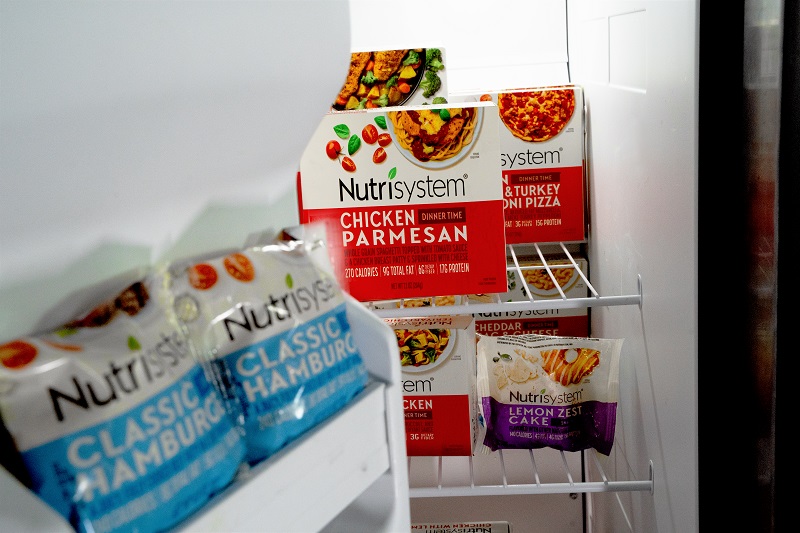Are you determined to lose weight this year but not sure where to start? With so many diets like keto, intermittent fasting and plant-based plans, it’s hard to know what actually works.
Here’s something surprising. Research shows most weight loss diets work about the same. As long as they create a calorie deficit (fewer calories in than out), they deliver similar results. The real key to success? Finding a plan you can stick with.
And that’s good news. It means you get to choose the option that fits best with your goals, lifestyle and challenges. But what should you look for when making that decision?
With insights from Mandi Knowles, a registered dietitian for Nutrisystem, and the latest nutrition research, here are five questions to help you choose the best plan for your 2025 goals.
Does the Plan Focus on Healthy, Filling Foods?

The type of diet—low-carb, high-protein or low-fat—may matter less than the foods you include. Foods that keep you full, energized and nourished can make it easier to stick with your plan and see healthy, lasting results.
Here’s what to look for in any diet plan:
- Low-calorie-dense foods: Foods like fruits, vegetables, egg whites, soups and oats let you eat larger portions for fewer calories. Plans built around these options help with long-term success. “They’re filling, so they help combat cravings and hunger, making it easier to maintain the calorie deficit required for weight loss,” says Knowles.
- Nutrient-rich choices: The best diet plan for weight loss does more than cut calories. It should provide nutrients like B vitamins, vitamin D, iron and magnesium to support energy, metabolism and overall health. Look for plans that encourage variety across food groups and avoid plans that eliminate entire food groups, like very low-carb diets that skip grains, unless medically necessary.
- Protein-rich options: Protein supports muscles and metabolism during weight loss. Knowles recommends plans that aim for at least 25% of daily calories from protein to help fuel your muscles and keep you full.
- Healthy fats: You don’t need to avoid fats to lose weight. In fact, unsaturated fats from olive oil, avocado and nuts can help weight loss efforts while providing nutrients and flavor. Just be cautious with diets high in saturated fats from meats and processed foods, which experts recommend keeping low for heart health.
Does the Plan Include Foods You’ll Actually Eat?

Nutritional value matters, but so does taste. A plan that includes foods you enjoy improves your chances of sticking with it.
It might sound obvious, but think back to fad diets like the cabbage soup diet. Motivation can push you to try extreme approaches, but sticking with any plan is tough if you don’t like the food. No matter how healthy cauliflower, quinoa or cottage cheese might be, if you dread eating them, they won’t help you stay consistent.
“Many different foods, even pizza and muffins, can fit into a healthy diet,” according to Knowles. “It’s all about choosing the right ingredients and learning how to balance portions on your plate.”
So, look for plans that include foods you already like while showing you how to incorporate them in healthier ways.
Does the Plan Promote an Active Lifestyle?

An effective weight loss plan pairs healthy eating with healthy movement.
“You can lose weight without adding exercise right away,” says Knowles. “So don’t feel discouraged if physical limitations make movement hard at first. But long-term success depends on building a more active lifestyle.”
Research shows that people who successfully maintain weight loss get at least 275 minutes of activity per week, about 40 minutes per day.
“Regular activity keeps your muscles active and strong,” adds Knowles, “which is really critical to maintaining a healthy metabolism for long-term success.”
Choose a plan that helps you start small, like walking for five to ten minutes daily, and build from there. Regular activity also benefits heart health, sleep and mental well-being.
Does the Plan Provide Clear Guidance and Built-in Support?

Pick a plan that doesn’t just tell you what to eat but gives you the tools to follow through. Structure, self-monitoring and support are key features that make healthy changes stick.
Here’s what to look for:
- Clear structure that removes guesswork: Plans with specific guidelines for food choices, portion sizes and meal planning make it easier to start and stick with a plan. “Knowing exactly what to eat and how much simplifies the process,” says Knowles. Avoid vague advice like “cut out sugar” or “eat clean” without practical steps.
- Self-monitoring tools for accountability: Tracking habits like meals, sleep, water intake and exercise can help you stay consistent and recognize patterns that need improvement. “It’s really hard to recall our daily behaviors accurately,” explains Knowles. “Tracking tools provide insights, motivation and accountability to support long-term behavior change.”
- Support systems that keep you motivated: Programs that offer individual coaching, group meetings or online communities help keep you on track by connecting you to others for encouragement, troubleshooting issues and learning.
Does the Plan Adjust to Your Lifestyle and Personal Needs?

The best diet plan for weight loss should fit into your life, not the other way around.
Before committing, consider your schedule, cooking skills, shopping access, food preferences, allergies and cultural traditions. Plans that meet you where you are make it easier to build lasting habits.
“There’s no one-size-fits-all weight loss plan,” says Knowles. “Once you feel confident a program has a solid nutrition base and tools to support you, the final test is seeing how well it matches your lifestyle and goals.”
For example, Nutrisystem’s 2025 programs offer flexibility like calorie and macronutrient adjustments, as well as pre-made meals to simplify planning. Programs like these let you start where you are and grow into healthier habits.
Whatever plan you choose, make sure it realistically fits into your daily life—and check with your healthcare provider to ensure it supports your health needs.
Summing it Up: Your Checklist for Finding the Best Diet Plan for Weight Loss

Now that you know what to look for in a diet plan, it’s time to put that knowledge into action.
Use this quick checklist to confidently evaluate any weight loss plan and find the one that fits you best:
- Does it emphasize nutritious, filling foods like fruits, vegetables, nuts, grains, seafood and lean proteins?
- Does it let you enjoy a variety of foods without cutting out entire food groups?
- Can you see yourself eating these foods every day without feeling deprived?
- Does it come with clear steps and tools to help you get started?
- Does it simplify tracking your progress with food logs, apps or other tools?
- Does it offer the kind of support that motivates you—coaching, groups or online communities?
- Can it realistically fit into your schedule, cooking skills and lifestyle?
Remember, the best diet plan for weight loss is the one you can stick with. Avoid getting hung up on perfection. Start small, stay consistent, and build on your progress as you go. Here’s to feeling your best in 2025!
References:
- Kim JY. Optimal diet strategies for weight loss and weight loss maintenance. Journal of Obesity & Metabolic Syndrome. 2020;30(1):20-31. doi:https://doi.org/10.7570/jomes200652.
- Kheniser K, Saxon DR, Kashyap SR. Long-Term Weight Loss Strategies for Obesity. The Journal of Clinical Endocrinology & Metabolism. 2021;106(7). doi:https://doi.org/10.1210/clinem/dgab0913.
- Leidy HJ, Clifton PM, Astrup A, et al. The role of protein in weight loss and maintenance. The American Journal of Clinical Nutrition. 2015;101(6):1320S1329S. doi:https://doi.org/10.3945/ajcn.114.0840384.
- DiNicolantonio JJ, O’Keefe JH. Monounsaturated Fat vs Saturated Fat: Effects on Cardio-Metabolic Health and Obesity. Missouri Medicine. 2022;119(1):69. https://pmc.ncbi.nlm.nih.gov/articles/PMC9312452/5.
- Johnson SA, Kirkpatrick CF, Miller NH, Carson JAS, Handu D, Moloney L. Saturated Fat Intake and the Prevention and Management of Cardiovascular Disease in Adults: an Academy of Nutrition and Dietetics Evidence-based Nutrition Practice Guideline. Journal of the Academy of Nutrition and Dietetics. 2023;123(12). doi:https://doi.org/10.1016/j.jand.2023.07.017
- Centers for Disease Control and Prevention. Benefits of Physical Activity. Physical Activity Basics. Published April 24, 2024. Accessed December 27, 2024. https://www.cdc.gov/physical-activity-basics/benefits/index.html
- Raynor HA, Champagne CM. Position of the Academy of Nutrition and Dietetics: Interventions for the Treatment of Overweight and Obesity in Adults. Journal of the Academy of Nutrition and Dietetics. 2016;116(1):129-147. doi:https://doi.org/10.1016/j.jand.2015.10.0317.
- ElSayed NA, Aleppo G, Aroda VR, et al. 8. Obesity and Weight Management for the Prevention and Treatment of Type 2 Diabetes: Standards of Care in Diabetes—2023. Diabetes Care. 2022;46(Supplement_1):S128-S139. doi:https://doi.org/10.2337/dc23-s008

